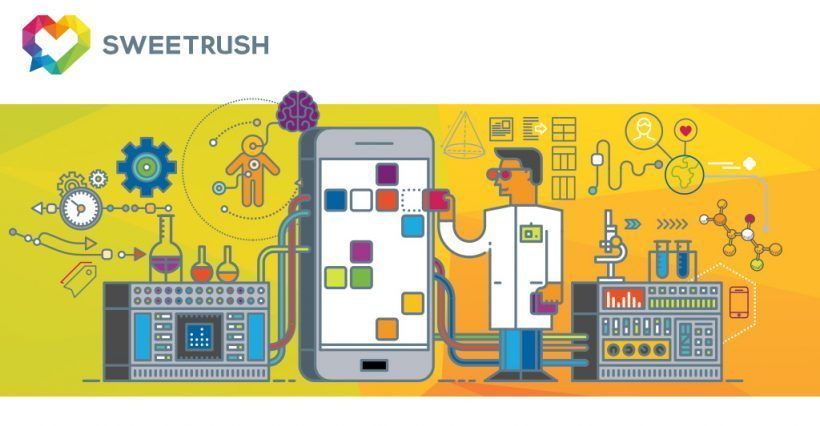The Future Is Mobile-First
Discover how mobile learning options can deliver seriously big benefits to your organization. You won't want to miss these potential gains or the opportunity to fast-forward into the future.
Conference Room Trainings Vs. Mobile Learning
Employees arrive on the job with specific skills and aptitudes and typically discover additional ways to contribute while navigating the workplace setting. But when it comes to teaching new skills, cold corporate trainings in desolate conference rooms should hit the curb. Mobile learning is fast, fun, and scalable. It also comes with a wealth of other individual and corporate benefits.
In the context of the coronavirus pandemic, mobile learning is reshaping the workforce. As many as 90% of organizations already rely on digital learning in some capacity. Why should your organization consider giving it a go?
Why Choose Mobile Learning?
No Restrictions On Learning Location
Geopolitical tensions and pandemic-related global travel restrictions may mean that your talent is located all over the world. How could you conceive of organizing everyone into a conference room anyway?
Hiring new talent is a hassle. It’s also extremely costly. Organizations can retain existing employees and improve skillsets by offering unique online opportunities to grow within the business.
Once employees are equipped with new capabilities and renewed confidence, they may choose to apply for additional accreditations. Alternatively, they may also aim for new roles within the organization. Ultimately, a minor investment in mobile learning can pay dividends.
Better Course Completion Rates
Can mobile learning increase course completion rates? Experts argue that yes, employees who are offered mobile options are more likely to complete a course than employees who must take physical on-site or off-site classes.
Further, micro-mobile modules tend to enable new knowledge to sink in more so than multi-hour training marathons. It leads to 17% faster information absorption. Who wouldn’t want their employees to learn more at a speedier rate? With a more fluid and frictionless information flow, enterprises can grow at an accelerated pace.
Real-Time Flexibility
The reality is that at least half of your newly remote workforce is at home with young children during the day. When it’s time to tie someone’s shoe, manage a melt-down, or time for lunch, the kids can’t wait. Instead, your employees’ work schedules are put on pause. With mobile learning modules, employees can easily be superheroes at home while remaining powerhouses at work. For businesses, flexibility is a friend and mobile learning improves the connection.
Disabilities
Firms are still failing to hire those with disabilities, despite such persons' exemplary qualifications. In the US, fewer than 20% of adults with disabilities are fully employed. Not only should your organization aim to buck this trend, but it should also consider how to expand options for existing employees who are disabled.
Mobile learning platforms can help. Within organizations that rely on physical office spaces, differently-abled persons may find a three-hour conference-room training uncomfortable or otherwise taxing. Offering an option through which people can easily learn without limits can make everyone feel more enthusiastic about giving every day their best shot.
Integrates Easily With Existing Infrastructure
Already have pre-recorded sessions or courses? Chances are that you can upload your current modules onto a mobile platform. IT experts can find seamless methodologies for transitioning content.
eLearning apps can be managed by your technical team, giving you continuous control over your content, your brand, and your strategy. As you get this process going, be sure to install proper mobile security. 27% of organizations suffer cyber-attacks due to inadequate mobile security protections.
Or Not?
Now that we’ve mentioned the multiplicity of advantages around mobile learning, it’s also worth noting the drawbacks. Although conference room roundtable discussions can be dry and somniferous, they negate the need for wi-fi. As a result, employees won’t have to contend with internet outages. Nonetheless, most plugged-in persons can manage the occasional provider outage and can effectively and continuously engage in mobile learning.
Conclusion
Mobile learning platform adoption gained popularity in the past few years, but interest really piqued during the global health crisis of 2020. Mobile learning ranks among the top three business development priorities for a large subset of organizations. The future is mobile-first.
As the technology improves, organizations may even be able to implement Augmented Reality- or Virtual Reality-based trainings. A few groups are already experimenting with this and are seeing amazing results.
Supercharge your employee trainings and empower your workforce. Consider moving to mobile learning in 2021 and 2022. Your employees will thank you and your board members might too!
Happy learning!









